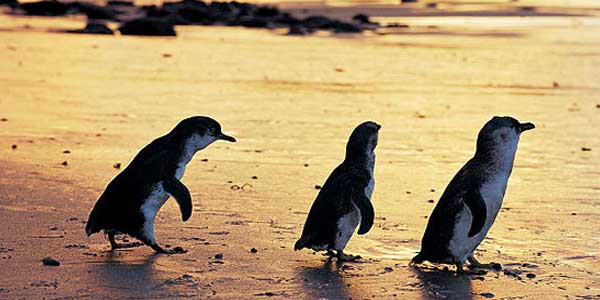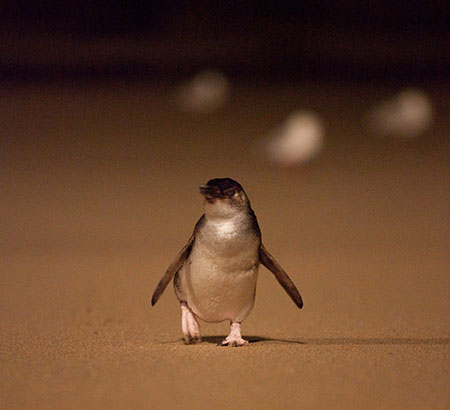
Visit The Little Penguins In Australia
Visit The Little Penguins In Australia Penguins. They are cute aren’t they? And while you may picture them in the cold depths of the South Pole, you can find Little Penguins (also known as Fairy Penguins) a little further north on Australia’s islands. Here are the locations you’re most likely to spot Little Penguins going about their day.
Visit The Little Penguins In Australia Phillip Island
Phillip Island is so popular for penguin watching that there’s a daily event known as Penguin Parade, in which the little penguins waddle their way up the shore every evening at sunset. Around 90 minutes from Melbourne, there’s a special viewing platform, guided tours, a boardwalk and visitor centre all about the adorable penguins that call Phillip Island home. Tickets for General Viewing are $24.50pp and photography is strictly prohibited as to not frighten them.

Penguin Island
45 minutes from Perth, Western Australia, is Penguin Island – and, unsurprisingly, the state’s largest colony of little penguins. Catch the ferry and see the penguins up close during a feeding session at The Discovery Centre, or visit during early winter and spot roughly 2000 of them nesting on the island! During peak nesting season, the island is closed to the public during July and August. The beautiful beaches and crystal clear ocean waters are inviting to other Australian wildlife including Australian sea lions, dolphins, pelicans, ospreys and other sea birds.
Tasmania
On Tasmania’s East Coast, Bicheno boasts a colony of penguins that you can watch return home from the ocean during dusk. Held every evening except Good Friday and Christmas Day, the guided tours are a great way to gain an insight into their life on Tasmania and help protect them without disturbing their journey. A tour is $30pp and bookings are a must.

Visit The Little Penguins In Australia Kangaroo Island
Their numbers have dwindled, but Kangaroo Island just off the shore of Adelaide still runs penguin tours at night to view those that reside on the island. With an experienced guide, you get to learn all about their life cycle – how they live on the island, when they go out to sea and when they return. The tours are intimate, so booking is recommended, and you need a little patience, but it’s well worth it once you spot them in the darkness.
